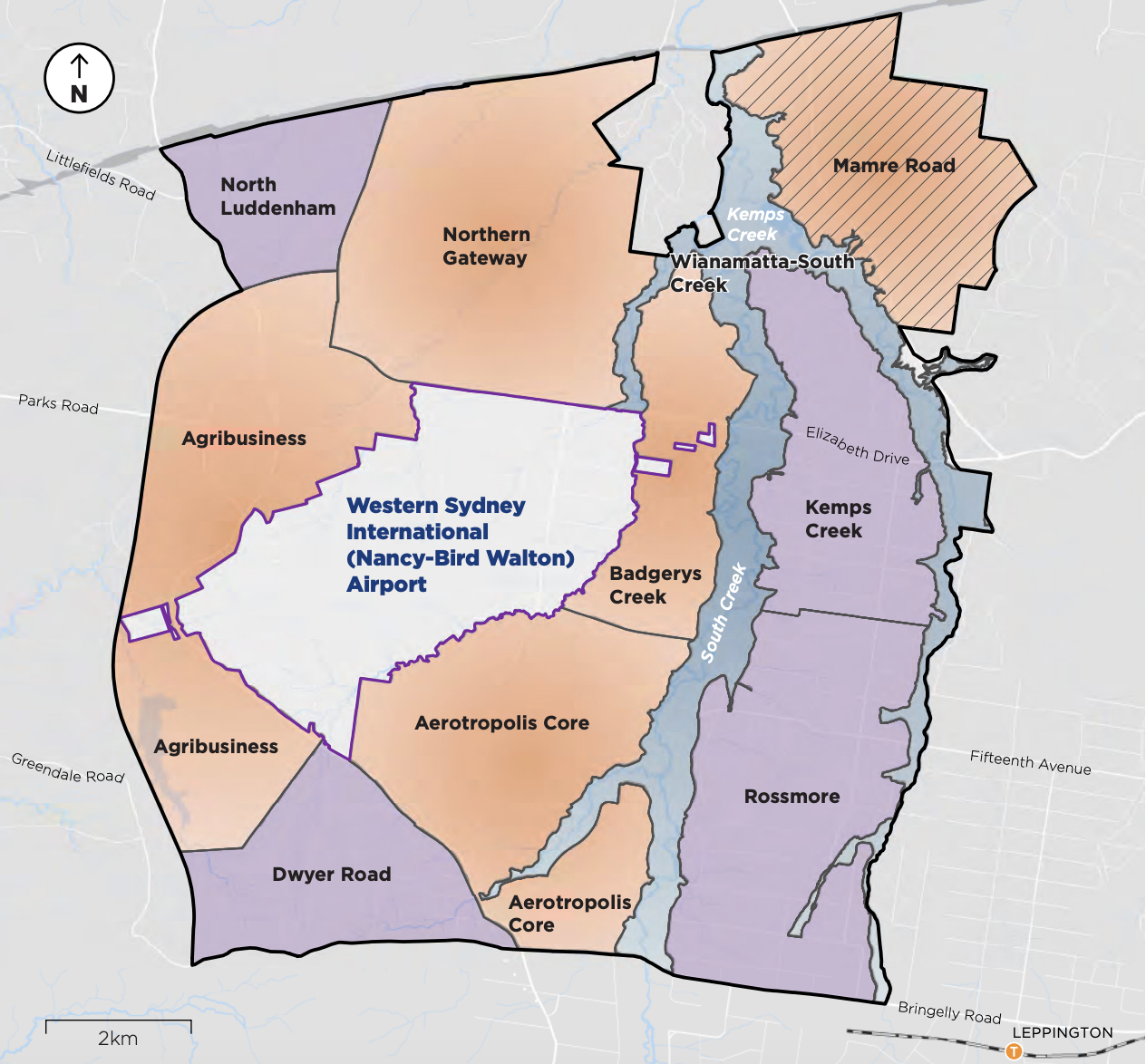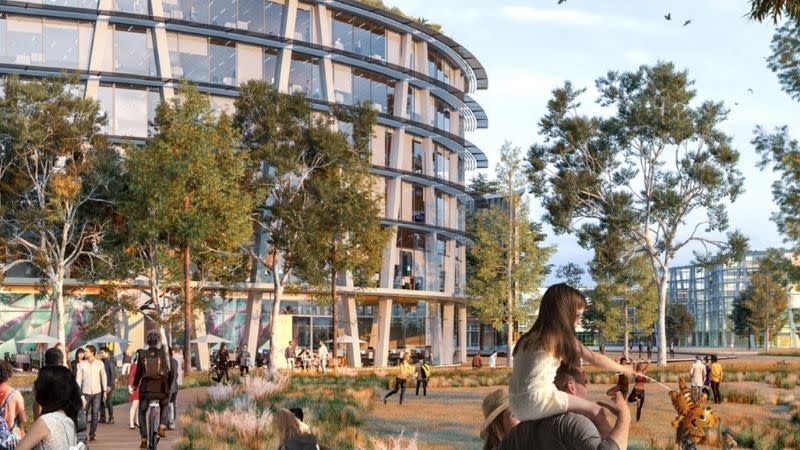
Final plans for the Western Sydney Aerotropolis have been unveiled, giving wings to one of the biggest projects in the history of New South Wales.
With the finalisation of the precinct plan, the development process for a new city surrounding the Western Sydney Airport at Badgerys Creek can begin.
The multi-billion-dollar project spanning 11,200ha is made up of five initial precincts and, as it is developed over the next 40 years, land will be acquired for a further four precincts.
It is predicted to become Australia’s third largest economy by 2036 with its initial stages supporting more than 100,000 jobs and the creation of 11,400 new homes.
NSW Planning Minister Anthony Roberts said the release of the finalised plans gave the community, investors and developers “the certainty they need to plan for the future”.
“The final precinct plan will enable the development process to begin in the Aerotropolis, and kick start the benefits and opportunities that a new international airport will bring to Western Sydney,” he said.
It includes schemes for the Aerotropolis Core, Badgerys Creek, Northern Gateway, Agribusiness and Wianamata-South Creek precincts.

“The finalisation of the plan for the initial precincts lays the foundation for the transformation of 6500ha of land, with new homes, jobs and open spaces, supported by the right infrastructure,” Roberts said.
However, the Property Council said there was “still a long runway to creating the certainty industry needs to start planting shovels in the ground.”
“This is a definite win, but there is still more to do,” Property Council Western Sydney regional director Ross Grove said.
“We need stronger commitments to state road upgrades, certainty on costs and an ongoing discussion about water management to ensure our shared aspirations in this precinct are fully realised.”
He said finalisation of the Aerotropolis precinct plan alters planning controls to maximise investment in the employment precincts surrounding the new Western Sydney Airport.
“The first set of planning controls were not going to create the investment atmosphere required to create jobs in the Aerotropolis,” Grove said.
“The changes we’re seeing today mean our members are better able to get on with the job of master planning and fine-tuning their visions for key sites adjacent to the airport.
“At the outset we said architectural design competitions for sheds and earthworks was planning-overkill and the government has listened.
“We support high-quality design outcomes in Western Sydney, but we can’t do this at the expense of our region’s economic productivity and competitiveness.”

Hundreds of submissions were received after the release of the draft precinct plan in late 2020, raising concerns about the rezoning of land and the impact on property values, road network changes, and the land acquisition timeframes and process.
“We’ve listened to the community and the Independent Community Commissioner, and finalised these plans in line with their feedback,” Roberts said.
“We took time to get the planning right, setting us up for success over the decades to come.”
He said developer contributions under the special infrastructure contribution framework will fund up to $1.1 billion in infrastructure including roads, public transport, health facilities and schools, to support the new city.
Western Sydney Minister Stuart Ayres said the community feedback had created “a better balanced Aerotropolis plan”.
“This is a once-in-a-generation opportunity to deliver a thriving new city for Western Sydney,” he said.
“Infrastructure investment in the airport, roads and the new metro will make the Aerotropolis one of the best-connected areas in the country, making the Western Parkland City the best place to live, work and invest in for generations to come.”